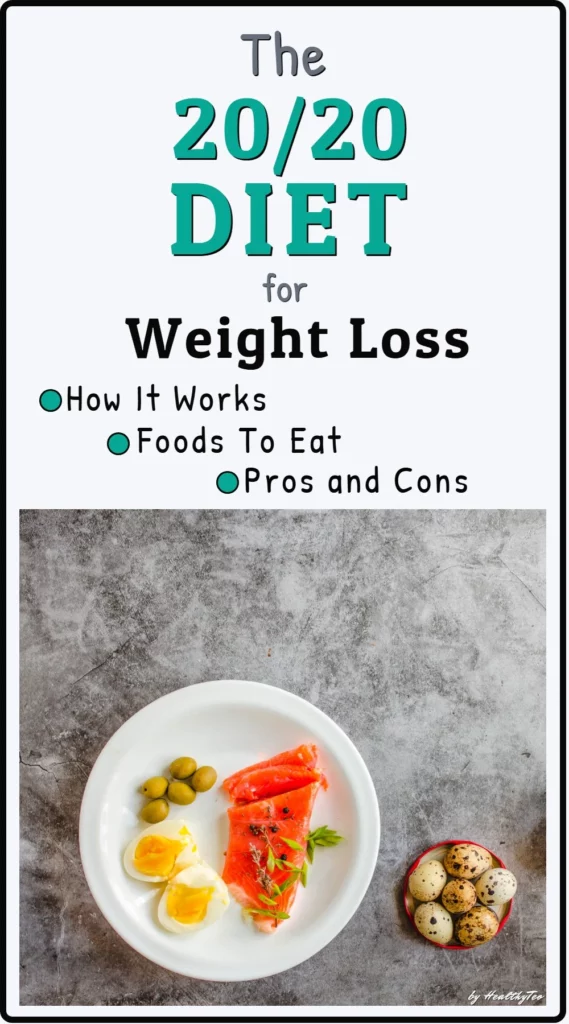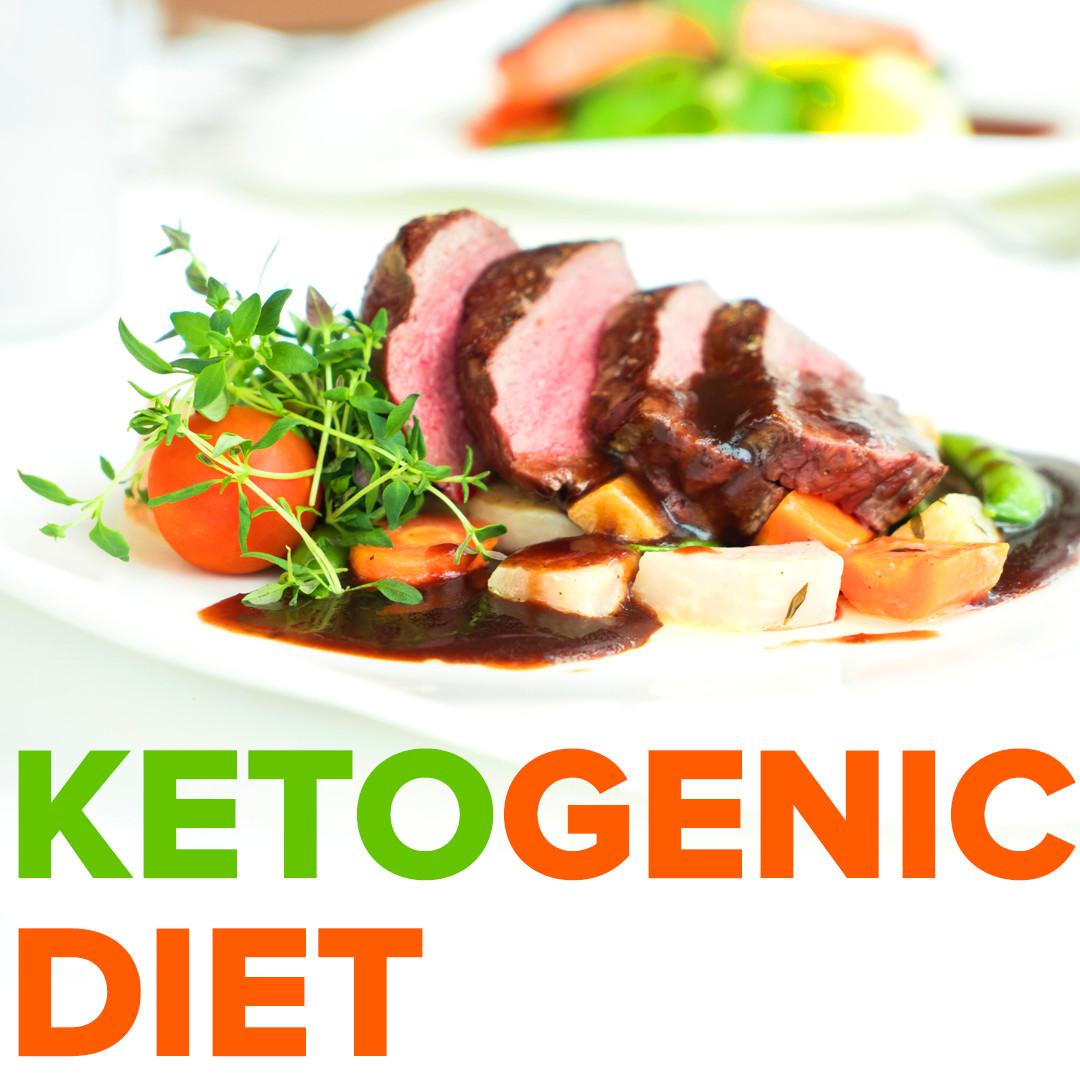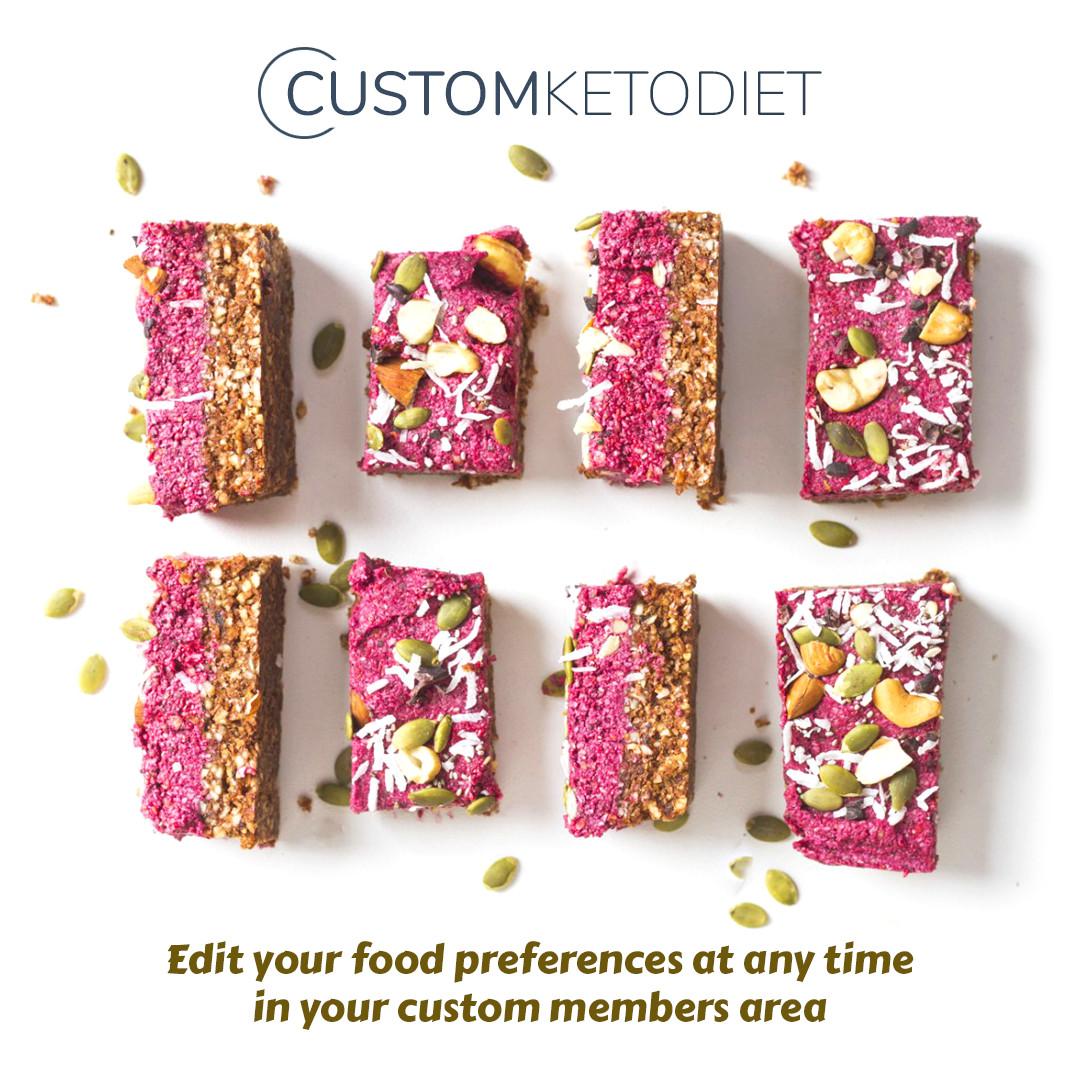Dr. Phil McGraw’s 20/20 Diet for weight loss is a four-phase cycling diet based on the 20 “power foods” that you should consume during the first five days (phase 1) of the diet.
In this article, we will go over the basics of the 20/20 diet, including how it works, foods to eat and avoid, and the benefits and drawbacks of this diet plan.
This post may contain affiliate links, which means we may receive a small commission, at no cost to you, if you make a purchase through a link. For more information, please see our disclosure.
What is the 20/20 Diet?
The 20/20 Diet is a four-phase weight loss plan that is based on the concept of “power foods.”
According to its author, Dr. Phil McGraw of the popular show “Dr. Phil,” these so-called “power foods” require a significant amount of energy to digest, which may aid in the weight loss process.
According to his book “The 20/20 Diet: Turn Your Weight Loss Vision Into Reality,” the 20 “power foods” require a lot of energy (calories) to process. As a result, the more calories you burn from eating these foods, the fewer net calories your body consumes.
Dr. Phil says: “The weight-loss secret isn’t really a secret at all. It is not a matter of willpower. It’s about changing what you eat, why you eat, where you eat, when you eat, and how you eat and doing it all in a way that’s unique to you.”
The 20/20 diet is divided into four phases that gradually reintroduce foods that were restricted in the previous phases. Along with this, it promotes various psychological tricks to prevent overeating, such as brushing your teeth when you’re hungry.
The long list of food restrictions, combined with psychological tips and regular exercise, is thought to help you lose weight.
How the 20/20 Diet works?
The diet is divided into 4 phases:
- Phase 1 – the 5-day boost
- Phase 2 – the 5-day sustain
- Phase 3 – the 20-day attain
- Phase 4 – management
Furthermore, the diet encourages at least 3-4 hours of moderate-intensity exercise and 2-3 hours of high-intensity exercise per week, for a total of 5-7 hours of exercise per week throughout all phases.
The 5-day boost – Phase 1
During this phase, you create momentum (a “boost”) to help you get started on a new path and stay motivated.
On the 20/20 Diet, this is considered the most difficult phase. During phase one, you are only allowed to consume 20 power foods.
These are some examples of the 20/20 Diet “power foods”
- apples, almonds
- cod, coconut oil, chickpeas
- dried plums
- eggs
- green tea
- lentils, leafy greens
- mustard
- olive oil
- prunes, pistachios, peanut butter
- rye, raisins
- tofu
- whey protein powder
- yogurt
These are the only foods to be consumed during the first five days of the cycle, and they must be consumed at all stages of the diet. They are foods that require time and effort to prepare and consume while also providing a lot of nutrition with few calories.
Beverages
- Water – aim to drink water with each meal
- Green tea
- Coffee – only if you absolutly have to. One 8-ounce cup of plain coffee with no more than 1/4 cup of skim or plant based milk and up to a teaspoon of raw sugar.
This phase must be followed for at least 5 days.
Meals and timing
Eat four meals a day, four hours apart. For example, breakfast at 8 a.m., lunch at 12 p.m., a snack at 4 p.m., and dinner at 8 p.m. Or whatever works for you, as long as meals are spaced about 4 hours apart.
Portion sizes
Portion sizes are given in the book, in the recipes for each of the meals for this phase.
Men need to eat more than women, so for one meal per day, they should double the portion of ingredients. That should be the meal you eat right before your most active time of the day.
Meal suggestions and recipes are included in the book. During this phase, stick to the recipes in the book rather than coming up with your own meal ideas.
The 5-day sustain – Phase 2
This phase allows for some more flexibility, but it is still very strict. During phase 2, you may stray from the list of 20 “power foods,” but you must include at least two at each meal and snack.
Foods to eat on phase 2:
- brown rice, bleberries
- chicken, cashews, carrots
- mushrooms
- oats
- tuna
You must follow this phase for 5 days.
Meals and timing – same as phase 1.
Portion sizes – same as phase 1.
Sensible splurges (any food you enjoy eating)
Once or twice a week, you may indulge in a reasonable splurge. A reasonable splurge portion should not be more than 100 calories.
Following are some examples: 14 potato chips, 2 store-bought chocolate chip cookies, 4 oz. red or white wine, 1 oz. dark chocolate bar, 3 vanilla wafer cookies.
Before you indulge in a splurge, take a 30-second self-assessment. The following are the questions:
- Is there an emotional reason for my desire for this splurge (sadness, stress, or boredom), and if so, is there another way I can address the emotion that does not involve food?
- Is it enough to know that a splurge is permissible and available to me to allow me to skip it this time?
- Would a glass of regular or sparkling water, or a cup of tea, help you get rid of this craving?
- Can I distract myself from this desire to splurge by doing something else (taking a bath, going for a short walk, etc.)?
If possible, make an honest effort to avoid the splurge. If you answered “no” to all four questions, then go ahead and splurge, but ONLY if you have already exercised or will be exercising later that day.
The 20-day attain – Phase 3
You can reintroduce most foods into your diet during this phase.
However, eating highly processed foods and foods high in simple carbohydrates on a regular basis is not recommended.
To avoid cravings and overeating, you can also include two “sensible splurges” per day. You must, however, limit it to 100 calories.
Foods to introduce during phase 3:
- avocados
- black beans
- potatoes
- quinoa
- raspberries
- spinach
Meals and timing – same as phase 1
Portion sizes – same as phase 1
Foods to avoid during phase 3
These foods can be eaten in small amounts on sensible splurges – keep in mind that the book doesn’t explicitly say you shouldn’t eat them, but they aren’t on the list of foods to eat.
- fast food
- processed foods
- sugars and artificial sweeteners
- white flour
- red meat
- salty foods
- full-fat dairy
- fatty foods except those listed as acceptable to eat
- alcohol
Managment phase
After completing the first three phases, you will enter the management phase, which will help you maintain any weight loss and lifestyle changes you have made.
This phase is intended to last indefinitely unless you gain weight, in which case you will return to phase 1.
Meals and timing – same as phase 1
Portion sizes and designing meals
You can use all of the meals in Phases 2 and 3. Do not choose Phase 1 meals during the Management Phase because they were designed specifically for the first part of the 20/20 Diet plan.
Each meal should contain these foods:
- 1 portion of protein
- 1-2 portions of vegetables and fruits
- 1 portion of starch
- 1 portion of fat
- beverages – assume the same as phase 1
Note*
Followers of the 20/20 Diet are advised to purchase McGraw’s book, which details the specific protocol and includes sections on managing your mindset during weight loss, for the best results.
20/20 Diet – Foods to eat and avoid
Though the first two phases are quite restrictive, the third and fourth phases have fewer food restrictions.
Here are the foods that you can eat on this diet:
20/20 power foods: According to Dr. Phil, this category includes the 20/20 Diet’s core foods, which are thought to increase the thermic effect of food and burn a lot of energy during digestion.
Every meal and snack should include at least two items from this list (list of 20 power foods mentioned above in the section for phase 1 of the diet).
Vegetables and fruits: Despite the fact that some vegetables and fruits are restricted during the first two phases, you can reintroduce most non-starchy and starchy vegetables and fruits in the third and fourth phases.
Animal protein: After the first phase, you can incorporate proteins such as chicken or turkey breast and lean ground beef into your diet.
Fish and seafood: McGraw recommends eating fish and seafood as part of the 20/20 Diet.
Cod is one of the 20 power foods allowed during phase 1. After that, you can add other fish and seafood because they are high in vitamins, minerals, and healthy fatty acids.
Dairy products: One of the 20/20 power foods is yogurt. During phases 3 and 4, you may consume cheese, milk, and other dairy products in moderation.
Healthy fats: Most phases of the diet permit the consumption of nuts and seeds, avocados, olives, and oils.
Avoid or limit your consumption of the following foods:
Refined carbs and sugars: While foods with simple carbs and added sugars are not completely off-limits in the later stages of the diet plan, McGraw recommends avoiding them as much as possible.
Processed foods: Foods that are commonly found in boxes, wrappers, or bags should be avoided. Chips, crackers, and pastries are a few examples.
Fast food: Avoiding old habits that may have contributed to weight gain is part of McGraw’s philosophy with the 20/20 Diet. The diet recommends limiting ready-made foods and takeout to rare occasions.
Sample meal plan
The 20/20 Diet plan calls for four meals a day, spaced four hours apart. The first phase is the most restrictive, which may make meal planning difficult.
The sample meal plan below provides suggestions for the first two phases of the diet.
Note* – This meal plan is not all-inclusive, and if you opt to follow the 20/20 Diet, you may choose alternate meals.
Day 1
- Breakfast – 1 peanut butter banana blueberry acai smoothie
- Lunch – 1 cup curry chickpea salad; 1 cup green tea
- Snack – 1 cup of yogurt with 1/4 cup dried raisins and choped prunesand 12 almonds
- Dinner – 4 ounces oven baked salmon with herbs; 1 cup mixed greens drizzled with 1/2 teaspoon of olive oil
Day 2
- Breakfast – 2 eggs scrambled, 1 cup sauteed kale with mustard seeds
- Lunch – 1 serving tuna salad collard green wrap; 1 cup of green tea
- Snack – 1 sliced apple with 1 tablespoon of peanut butter
- Dinner – 1 serving ginger chicken with baby bok choy
Day 3
- Breakfast – 1 serving spinach under eggs; 1 cup green tea
- Lunch – 1 slice rye toast topped with 1 tablespoon peanut butter; 1 cup green tea
- Snack – 1 serving high protein shake with berries
- Dinner – 4 ounce pan seared cod; 1/2 cup cooked lentils; 1 cup sauteed collard greens with mustard seeds
If you want to see more interesting dishes using the crucial 20 “power foods” from the 20/20 Diet, visit this article on Allrecipes.
Potential benefits and drawbacks
The 20/20 Diet, like all diets, has advantages and disadvantages. Here are the benefits and drawbacks of this diet to help you decide if it’s right for you.
Benefits
Includes a wide range of foods
Apart from the first five days (phase 1), which are highly restrictive, the 20/20 diet allows all foods to be consumed in moderation after those five days.
The other phases promote a variety of healthy foods, such as animal proteins, starches, and vegetables.
Technically, no food is forbidden, which reduces the likelihood of bingeing as a result of suppressed cravings. Limiting “sensible splurges” like dessert to 100 calories, on the other hand, may not be satisfying or sustainable.
Promotes physical activity
The 20/20 Diet promotes regular exercise, which is not something that all diet plans do.
Dr. Phil recommends 3-4 hours of moderate-intensity exercise per week and 2-3 hours of vigorous exercise. You’ll get at least five hours of exercise per week if you meet both minimums.
Those who do not regularly exercise should consult a healthcare professional before beginning to exercise to avoid injuries.
Focuses on the psychological aspect of eating
Dr.Phil goes deep into the psychology of eating, such as emotional eating and environmental influences that drive people to eat, in his book.
These suggestions may assist you in better understanding the reasons for your food choices and implementing various strategies to encourage healthy eating habits.
Downsides
May not be sustainable
The diet states that if you gain weight, you may need to return to phase 1. This may imply that the diet is not long-term sustainable, as participants may not adhere to the recommendations in the final phase – possibly due to its low-calorie nature and restrictions on “splurge” foods.
Some people may find it too structured
For some people, the advice to “eat every 4 hours” may be too regimented. With life being as hectic as it is, it’s difficult to keep track of when you eat.
What if some people need to eat every two hours while others can go for much longer periods without feeling hungry? It’s not always a good idea to ignore hunger cues in order to follow diet rules.
May lead to a negative relationship with food
Dr. Phil’s book contains tips and tricks to help people avoid dieting pitfalls, but these tricks will not work for everyone in the long run.
For example, when you’re craving junk food, he recommends brushing your teeth. Adhering to strategies like this can impair your ability to recognize your natural hunger cues.
Your cravings could be telling you something important. Maybe your body needs carbohydrates to replenish glycogen stores after a workout, or maybe you’re just hungry.
Furthermore, the diet entails eliminating large groups of food and gradually reintroducing them. For some people, this can result in a negative relationship with food.
A general approach to weight loss
Weight loss is a highly personalized process. Successful weight loss requires customization to a person’s health status, activity level, previous eating habits, and a variety of other factors.
The 20/20 Diet and similar diets make the assumption that everyone can lose weight by following the same plan, which is simply not true.
Related: You Can’t Lose Weight? Here Are The Reasons Why

Final thoughts on the 20/20 Diet for weight loss
The 20/20 Diet is a four-phase weight loss program. For the first two phases, the diet is very restrictive, and it is mostly known for the 20 “power foods” that you should consume in the first phase. The third and fourth phases are less restrictive and allow you to eat a variety of foods.
This diet is not for everyone, and because it restricts the consumption of certain foods in phases 1 and 2, it is best to be avoided by people who have disordered eating or struggle with restrictive diets.
Plans like the 20/20 Diet may not be sustainable in the long run, especially if you struggle with food restrictions.
Our goal was to provide you with information about the 20/20 Diet: How it works, what foods to eat and avoid, and the benefits and drawbacks. It is entirely up to you to make your decision.
Simply think about it, and instead of attempting a special and restrictive diet, it is better to focus on a sustainable healthy lifestyle that includes eating whole nutrient-dense foods, managing stress, and exercising on a regular basis.
Knowing this allows you to decide what works best for you. Not everyone has the same nutritional requirements or weight loss goals.
You should be aware that your weight loss journey is completely unique, and before making changes to your diet, you should gather all pieces of information about the diet and consult with your health care provider.




